9 Spiritual Garden Ideas to Create a Calm and Reflective Outdoor Space
Many people seek ways to create calm and peaceful outdoor spaces that help them connect with nature and find balance. Spiritual gardens offer a way to transform yards or patios into quiet retreats where reflection and mindfulness can take place.
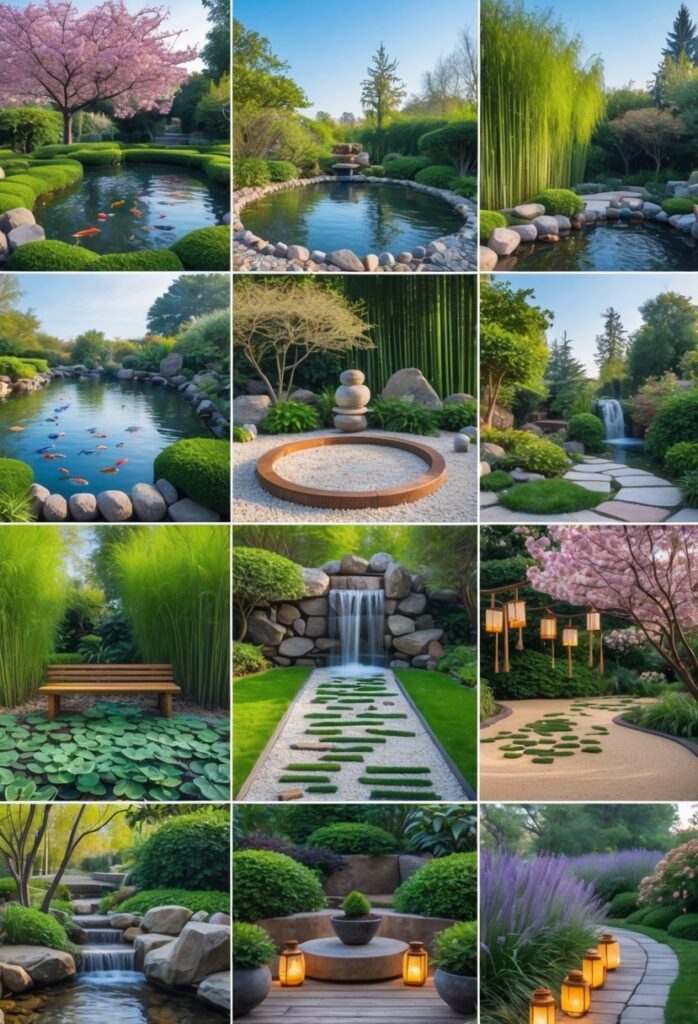
These spaces combine natural elements and intentional design to nurture the spirit and promote relaxation. They can be adapted to fit different preferences and environments, making them accessible for anyone interested in cultivating serenity at home.
1) Create a meditation nook with comfortable seating and calming décor

A meditation nook should have seating that feels soft and supportive. Cushions, a small bench, or a cozy chair can make the space inviting. Comfort encourages longer, more focused meditation sessions.
Calming décor helps set the right mood. Natural colors like green, beige, or soft blue work well because they feel peaceful. Adding simple decorations such as plants, candles, or gentle lighting can improve the atmosphere.
The location matters too. A quiet corner or near a window with natural light can create a sense of calm. Soft, indirect light is best as it avoids glare and helps relax the eyes.
Personal touches make the meditation nook unique. A favorite blanket, meaningful art, or a small statue can add a sense of connection. These small details can support mindfulness and make the space one they want to visit often.
More ideas on making a meditation nook with cozy seating and peaceful decorations are available in this guide on meditation nook ideas.
2) Incorporate a labyrinth path for mindful walking and reflection
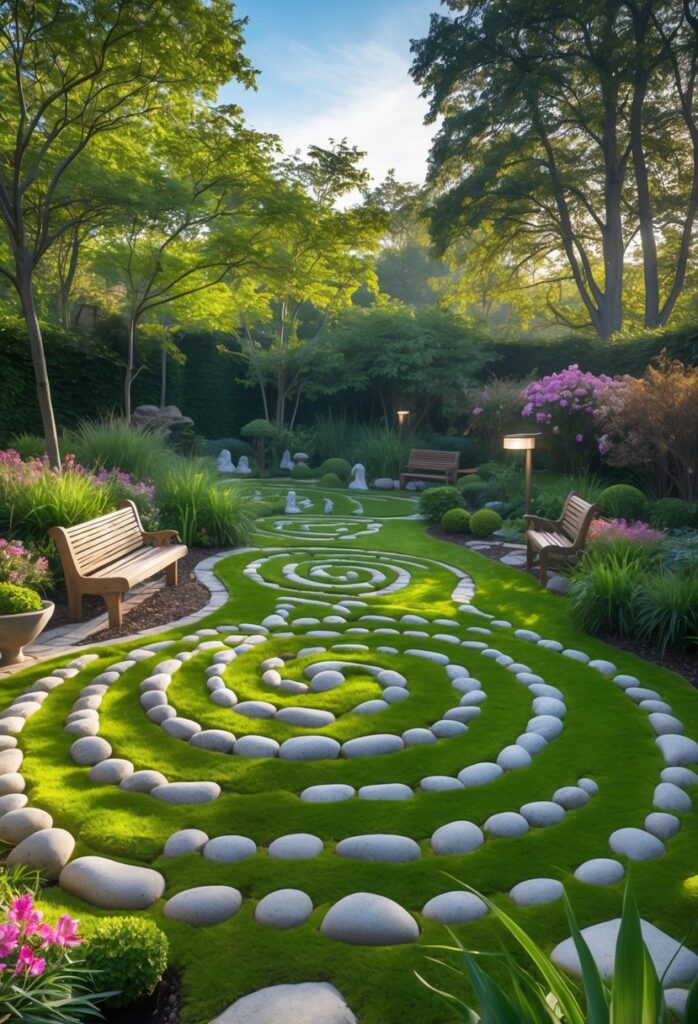
A labyrinth path offers a simple way to add mindful walking to a garden. Unlike a maze, it has a single winding route that leads to the center and back out. This design encourages focused movement and quiet thought.
Walking a labyrinth can help people slow down and reflect on life or spiritual questions. It creates a peaceful space where physical movement blends with mental calm. The path invites steady, gentle steps that promote mindfulness and inner balance.
Labyrinths are often used in spiritual or meditation practices because they support prayer, healing, and insight. Adding one to a garden creates a sacred spot for contemplation. It brings together nature, art, and intention in a meaningful way.
Setting up a labyrinth does not require much space. Gardeners can use stones, plants, or pavers to mark the path. This adds structure and beauty, making the walk both calming and visually appealing.
For more about designing and using labyrinths for meditation and spiritual reflection, see designing a labyrinth for outdoor meditation practice.
3) Plant lavender and sage for their calming and spiritual properties
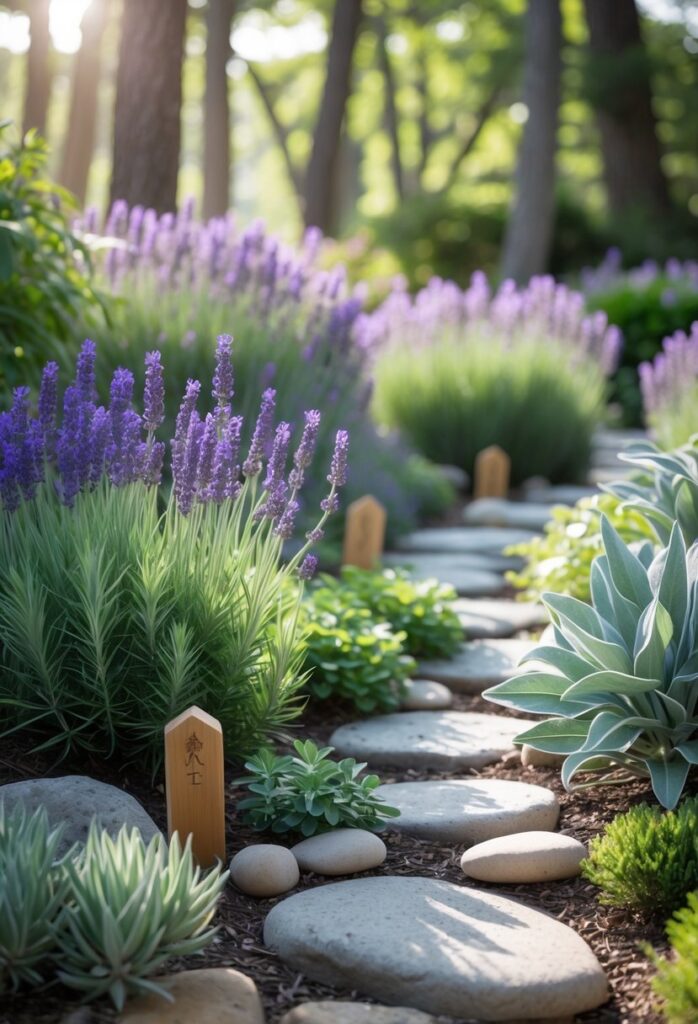
Lavender is known for its relaxing scent and calming effects. It is often used to promote inner peace and reduce stress. Its gentle purple flowers add beauty and a peaceful vibe to any garden. Lavender supports spiritual growth and can create a calm space for reflection. More about lavender’s calming benefits can be found at 11 Spiritual Benefits of Lavender.
Sage has a long history in spiritual practices, especially for cleansing spaces. It is commonly used in smudging to clear negative energy. Growing sage at home helps keep these cleansing properties close by. Sage prefers plenty of sunlight and well-drained soil, making it easy to care for. Learn more about sage’s spiritual use at 15 Plants That Boost Spirituality and Clear Negative Energy.
Together, lavender and sage make a strong combination for a spiritual garden. They bring both beauty and purpose by promoting calm and cleansing energy. These plants help create a serene spot ideal for meditation and spiritual connection.
4) Add a water feature like a small fountain or pond to enhance tranquility

Adding a water feature like a small fountain or pond can bring a peaceful feeling to any garden. The sound of gently moving water helps create a calm and quiet atmosphere. This can make the garden a better place for meditation or quiet reflection.
Small water features fit well in limited spaces. A tabletop fountain or a small pond can add charm without taking up much room. They also work with different garden styles, from modern to naturalistic.
Using simple materials and a pump, anyone can install a water feature. Regular care is needed to keep the water clean and avoid algae build-up. Proper maintenance keeps the feature looking and sounding its best.
Adding lighting, like LED fountain lights, can create a calming effect even at night. These touches make the garden inviting at all times. More ideas for easy water features can be found in guides on creating tranquil backyard spaces.
Learn more about creative and easy water features for gardens at 25 refreshing water feature ideas for your landscape.
5) Use wind chimes to introduce soothing sounds that promote peace
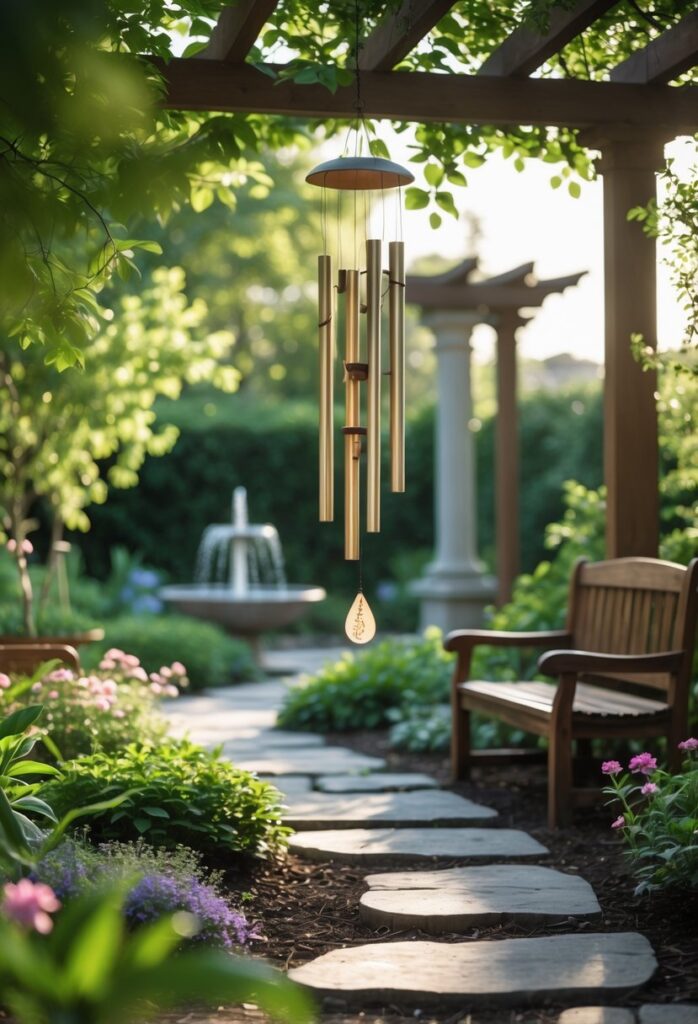
Wind chimes add gentle, natural sounds to a garden. Their soft melodies can create a calm atmosphere. This helps people feel more relaxed and focused.
Placing wind chimes in open areas allows the breeze to move them easily. Each chime produces a unique tone that blends with nature’s sounds. This harmony can enhance peaceful moments spent outside.
Wind chimes are also seen as spiritual tools. Many believe their sounds clear negative energy and invite positive feelings. Adding them to a spiritual garden can support meditation and mindfulness.
Choosing materials like bamboo or glass lets you customize the tone and look. Wind chimes can become a simple, beautiful part of the garden’s design, blending sight and sound naturally.
For creative ideas on using wind chimes effectively, see this guide on wind chime garden ideas. It offers ways to bring soothing sounds and beauty to outdoor spaces.
6) Designate a space for altar or sacred objects reflecting your beliefs

He or she should choose a spot in the garden to place an altar or sacred objects. This space becomes a special area that reflects their spiritual beliefs and practices. It can be simple or detailed, based on personal preference.
Meaningful items like candles, stones, or plants help create a connection and focus for meditation or reflection. Each object should hold significance and support the intentions behind the space.
It’s important to keep the area clean and respected. This sacred corner can serve as a quiet place for stillness and spiritual connection, enhancing the garden’s overall peacefulness.
For guidance on arranging meaningful items, see how to select and set up an altar to support spiritual growth and reflection. This helps create a space that truly resonates with individual beliefs and needs.
More details on building a sacred space can be found at how to set up a personal altar in your home or nature.
7) Integrate native plants to honor the local environment
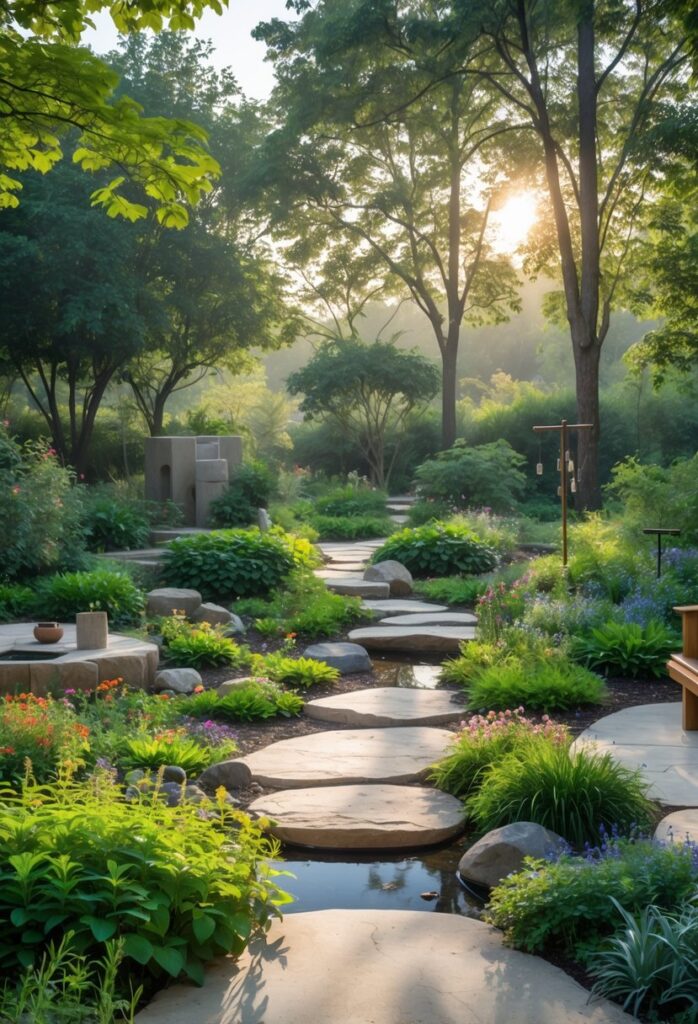
Using native plants in a spiritual garden helps connect the space to its natural surroundings. These plants are well adapted to the local climate and soil, making them easier to care for. They support local wildlife, such as birds and pollinators, which adds life to the garden.
Native plants also promote biodiversity by preserving local ecosystems. They create a balanced environment that respects nature’s cycles. This approach aligns with the purpose of a spiritual garden as a place of harmony and reflection.
Choosing native species shows respect for the land’s history and culture. It can deepen a person’s connection to the area and its natural beauty. For ideas on how to design a sacred grove with native plants, see how others create meaningful spaces using regional flora.
8) Install soft, solar-powered lighting to create a serene evening atmosphere

Soft, solar-powered lights bring a calm and peaceful feel to a garden after dark. They use sunlight during the day and glow gently at night without needing wires or electricity. This makes them easy to set up anywhere.
Placing solar lights along paths or near plants helps create a quiet, inviting space. The soft light can highlight key features without being too bright or harsh. This adds to the garden’s sense of calm and relaxation.
Solar lights also save energy and reduce costs. They work well in spiritual gardens because they blend natural light with eco-friendly technology. Many designs fit well in outdoor spaces and support a serene mood.
For ideas on using solar lights effectively, see creative examples of solar-powered garden lighting ideas. These lights help maintain the garden’s peaceful feel while providing subtle illumination that encourages contemplation and mindfulness.
9) Include stone statues or spiritual symbols that resonate personally

Adding stone statues or spiritual symbols can give a garden a strong sense of meaning. These elements serve as focal points and help create a space that feels connected to one’s beliefs or values.
Choosing symbols that hold personal significance is important. It could be a cross, an Om symbol, a crescent moon, or any other image that reflects their spiritual path. This makes the garden feel unique and purposeful.
Stone statues are durable and blend well with natural settings. They can represent spiritual guides, deities, or virtues like wisdom and courage. Placing them thoughtfully can enhance the peaceful atmosphere.
Creating a simple altar or a sculptural symbol using stones or plants is another option. These can organize the garden’s design and invite reflection or meditation.
Including such meaningful items adds depth. It allows the garden to be more than just a beautiful space — it becomes a place that nurtures the spirit. For more ideas, see this guide on creating serene spiritual garden ideas.
How Spiritual Gardens Support Mindfulness
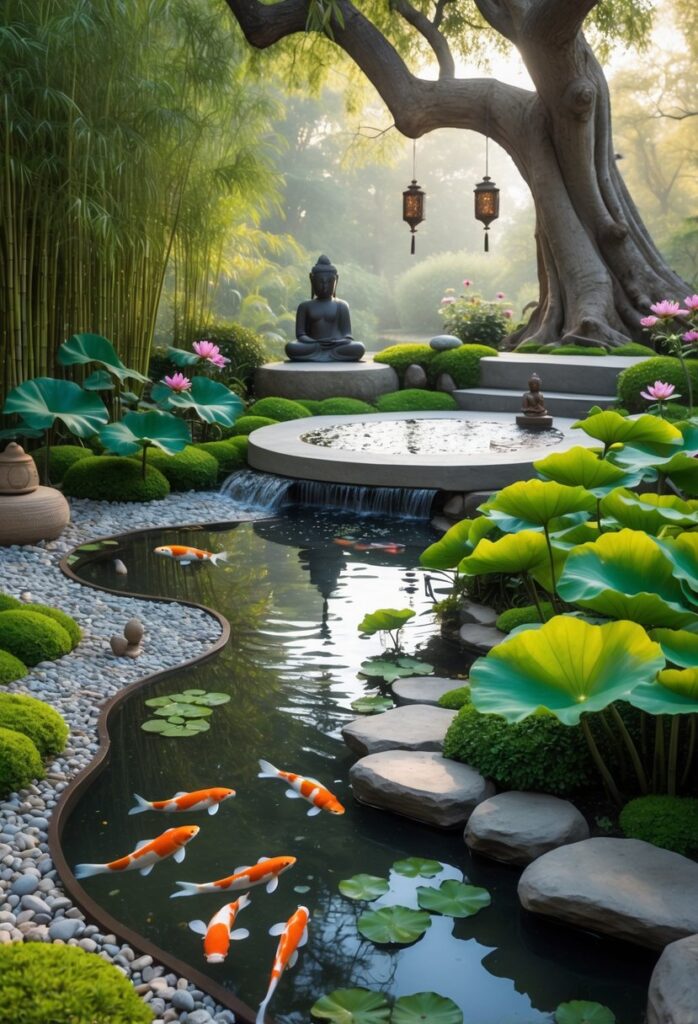
Spiritual gardens help people focus and calm their minds by creating peaceful environments. These spaces improve emotional health and encourage meaningful practices that deepen the connection with nature.
Benefits for Emotional Well-Being
Spiritual gardens offer a quiet refuge from daily stress. Being surrounded by plants and natural elements can lower anxiety and improve mood.
The careful design often includes elements like water features or wind chimes that promote relaxation. These features engage the senses without overwhelming the mind, helping to steady thoughts.
Spending time in such a garden allows people to pause and reflect, which supports emotional balance. This can lead to better self-awareness and reduced feelings of tension or sadness.
By encouraging mindful presence, spiritual gardens play a key role in nurturing emotional health.
Connecting with Nature Through Ritual
Spiritual gardens provide a space for simple, meaningful rituals. Planting, tending, or meditating in the garden creates a regular practice that anchors attention.
These rituals help people observe natural cycles like growth, decay, and renewal. Recognizing these cycles promotes acceptance and a deeper sense of harmony with life.
Incorporating symbolic items, such as stones or statues, can strengthen a person’s spiritual focus. They serve as reminders of important values or intentions.
Overall, the garden becomes a place where nature and personal spirituality meet through consistent, sensory-engaged ritual activities.
For more ideas on creating a mindful outdoor sanctuary, see 27 serene spiritual garden ideas to create your perfect meditation space.
Design Principles for Spiritual Gardens
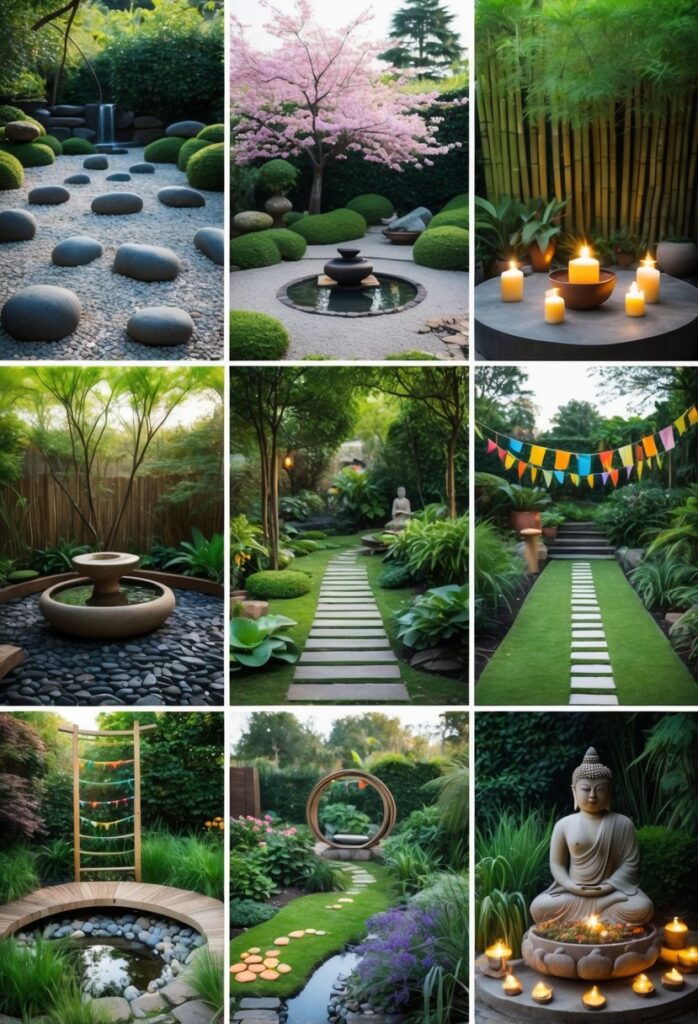
A spiritual garden should create a peaceful and meaningful environment. Its design involves careful planning of the space and use of thoughtful elements. The goal is to foster calm, reflection, and personal connection.
Sacred Space Layouts
A sacred garden layout often uses clear paths to guide people through different areas of the garden. Circles and spirals are common shapes because they symbolize unity and wholeness. Placing seating areas in quiet spots encourages meditation and mindfulness.
The layout should balance open spaces with plantings to create a sense of harmony. Water features like small ponds or fountains are placed strategically to add calming sounds. Lighting is important too, using soft lights to highlight key spots without overwhelming the natural atmosphere.
Creating zones for different activities—like meditation, prayer, or quiet reflection—helps the garden feel more purposeful. Paths should be wide enough to walk comfortably and made from natural materials.
Incorporating Symbolic Elements
Symbolic elements give the garden deeper meaning. Statues, stones, or sculptures representing spiritual themes can inspire inner peace. Plants chosen for their symbolism—such as lavender for calm or rosemary for remembrance—add layers of significance.
Water serves as a powerful symbol of renewal and cleansing. Including it in the garden, either through fountains or small streams, supports a spiritual mood. Light elements like candles or lanterns can represent hope and guidance.
Instruments for sound—wind chimes or gentle bells—bring sensory balance. Using a mix of textures and colors also helps connect the visitor with the natural world on a deeper level. Each element should be chosen for both its symbolic meaning and its ability to create a tranquil atmosphere.
For more ideas on spiritual garden design, visit 9 Essential Elements for Creating Your Own Spiritual Garden.
Frequently Asked Questions
A spiritual garden blends natural elements and design to create a calm, reflective place. Key features include special plants, peaceful sounds, calming water, and spaces for meditation or walking.
How can one infuse spirituality into a garden space?
They can add meaningful plants like lavender and sage for calmness and spiritual energy. A meditation nook with cozy seating and simple décor helps deepen reflection. Paths like labyrinths encourage mindful walking, promoting focus and peace.
What elements are essential for a peaceful meditation garden?
Comfortable seating is important to support long meditation sessions. Soft sounds from wind chimes introduce a gentle, soothing atmosphere. Water features such as fountains or small ponds add calm and mask distracting noise.
Which plants are commonly associated with healing and spiritual growth?
Lavender and sage are popular for their calming and cleansing properties. Other herbs like rosemary and thyme can also support mental clarity and spiritual balance. These plants create a natural, healing environment.
How does a Zen garden reflect spiritual principles?
A Zen garden uses rocks, gravel, and minimal plants to symbolize simplicity and mindfulness. The careful arrangement supports contemplation and a sense of harmony with nature. This space encourages letting go of stress and focusing on the present.
What are effective ways to incorporate water features into a spiritual garden?
Small fountains or ponds can be placed near meditation areas for easy hearing of flowing water. Gentle water sounds foster relaxation and mask unwanted noise. Reflective water surfaces enhance the feeling of peace and connection.
What design principles should be considered when creating a sacred outdoor sanctuary?
Balance and simplicity are key; avoid clutter and choose natural materials. Pathways should invite slow, mindful movement like labyrinths. Incorporating plants, sounds, and water elements in harmony supports a tranquil and spiritual space.
